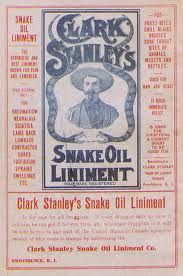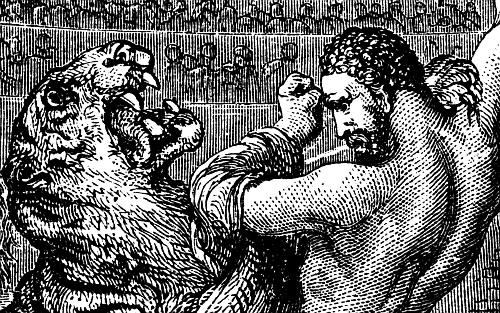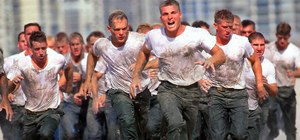Hard Work IS the Shortcut
 Saturday, October 15, 2011 at 03:40PM
Saturday, October 15, 2011 at 03:40PM  CAtennis
CAtennis 

CAtennis is a passionate discussion for serious tennis players, parents and coaches looking for something different. No talk about technique, no talk about useless theory, no gimmicks; just practical advice from first-hand experience on how to improve your tennis. Kick back, drink the content, bounce ideas, and pitch articles (or friend us on Facebook).
Unless otherwise noted, all articles are authored by the founders of CAtennis. Enjoy!
 Saturday, October 15, 2011 at 03:40PM
Saturday, October 15, 2011 at 03:40PM  CAtennis
CAtennis 

 Saturday, October 15, 2011 at 03:37PM
Saturday, October 15, 2011 at 03:37PM  CAtennis
CAtennis There are key points in a tough match where you have to dig deep and find the motivation that you need in order to push through the barriers of pain and the obstacles posed by your opponent. You can find yourself at 5-5 in the third set on a brutal, hot and humid summer day. How do you deal with these situations?! The reality is that as you progress in the game, you will face greater obstacles and more momentous occasions.
To overcome these situations it helps if, in addition to your standard training and workouts, you include some sort of physical challenge into your routine. Be it running up hills (like Andre Agassi or Jerry Rice), sprinting up sand dunes (like Marv Dunphy's Pepperdine volleyball team), running miles through the desert or in the snow, jumping rope for 2 hours straight, biking a century, participating in a survival race or something equally taxing, having an "extra-curricular" training method that is extra tough will assist you on the tennis court. Some of these methods can also improve your overall fitness, so that's a bonus.

More importantly, however, they make the voice inside your head telling you to keep going louder and more convincing ("you CAN do it", "come on PUSH it"). When you're on the court, you're out there by yourself. You can have 1000 fans supporting you or 1000 fans rooting against you (and if you make the NCAAs you will experience both). But only one voice matters and that's the voice that's inside your head; your INNER COACH. It can tell you to give up ("it's OK to quit; losing's fine") or to keep going ("no pain, Rocky! No Pain!"). If you include a difficult training method into your routine - even if it's once every 2-3 weeks - you can recall the positive voice inside you. You say to yourself "hey, if I did THAT I sure as heck can do THIS." Or, "I'll be darned if I'm going to let this son-of-a-gun run away with this match. He didn't run up those hills in the middle of summer...all by himself! I DID! There's no way he's beating me".
 Saturday, October 15, 2011 at 03:33PM
Saturday, October 15, 2011 at 03:33PM  CAtennis
CAtennis I am sometimes approached by a parent who would like me to help her child improve a certain part of the game (be it the serve, forehand, backhand, etc.). This is great as there are few things that give me as much pleasure as assisting an eager youngster in achieving his objectives. So we warm up, break a sweat and start following the marching order. We take a look at this part of the player's game, start tweaking the stroke a little bit and, at the end, I make some suggestions for improving. Most of the time, I hear back that my input has been helpful but that the stroke still broke down in the match. So we either go back to the drawing board or the player moves to a different coach like a bee from flower to flower.

Short of more repetition, one overlooked method is the inclusion of objective testing in the player's practices. For example, say that the player wants to improve the serve. Great; which part? Power, accuracy, spin, depth? Same with forehand, backhand and volleys. Which component of the shot needs, in the parent/player's opinion, improvement? Without identifying this goal, how do we know when we've achieved it? Much like track athlete wouldn't come to a coach and tell him that he needs to run "better", you cannot tell a tennis coach that the serve "needs to get better".
We need to first dissect the problem and then remedy it accordingly. Take, for example, the serve. If you want to increase speed, you have to start taking radar gun readings. We need to see if the serve is getting faster and that's one way of doing (actually, it's pretty much the only way). Unfortunately, a lot of players don't like to have their feelings hurt, so they'd rather be blissfully ignorant of the actual speed of their serve as opposed to measuring it objectively and see where they stand against their peers and rest of the world.
Also, let's assume that the player wants to work on accuracy/placement. In order to be accurate, we need a target - initially it will be big; subsequently it will be smaller. So, for a serve, we put together a large circle of targets and see how many times the ball lands in it (given a set number of serves - e.g., 20). Then, we practice for a few weeks and go back to the testing. Again, we use 20 balls and see if the player's improved. Assuming s/he has, we make the circle smaller and test again. We keep track of number to be used as comparison for next time.
Objective testing is the best method to determine your level of improvement. Of course, matches are method of measuring improvement as well, however, since the opponents are getting better also, that comparison is somewhat of a moving target. Test against yourself in order to track your development from day to day.
 Saturday, October 15, 2011 at 03:30PM
Saturday, October 15, 2011 at 03:30PM  CAtennis
CAtennis  Saturday, October 15, 2011 at 03:28PM
Saturday, October 15, 2011 at 03:28PM  CAtennis
CAtennis
